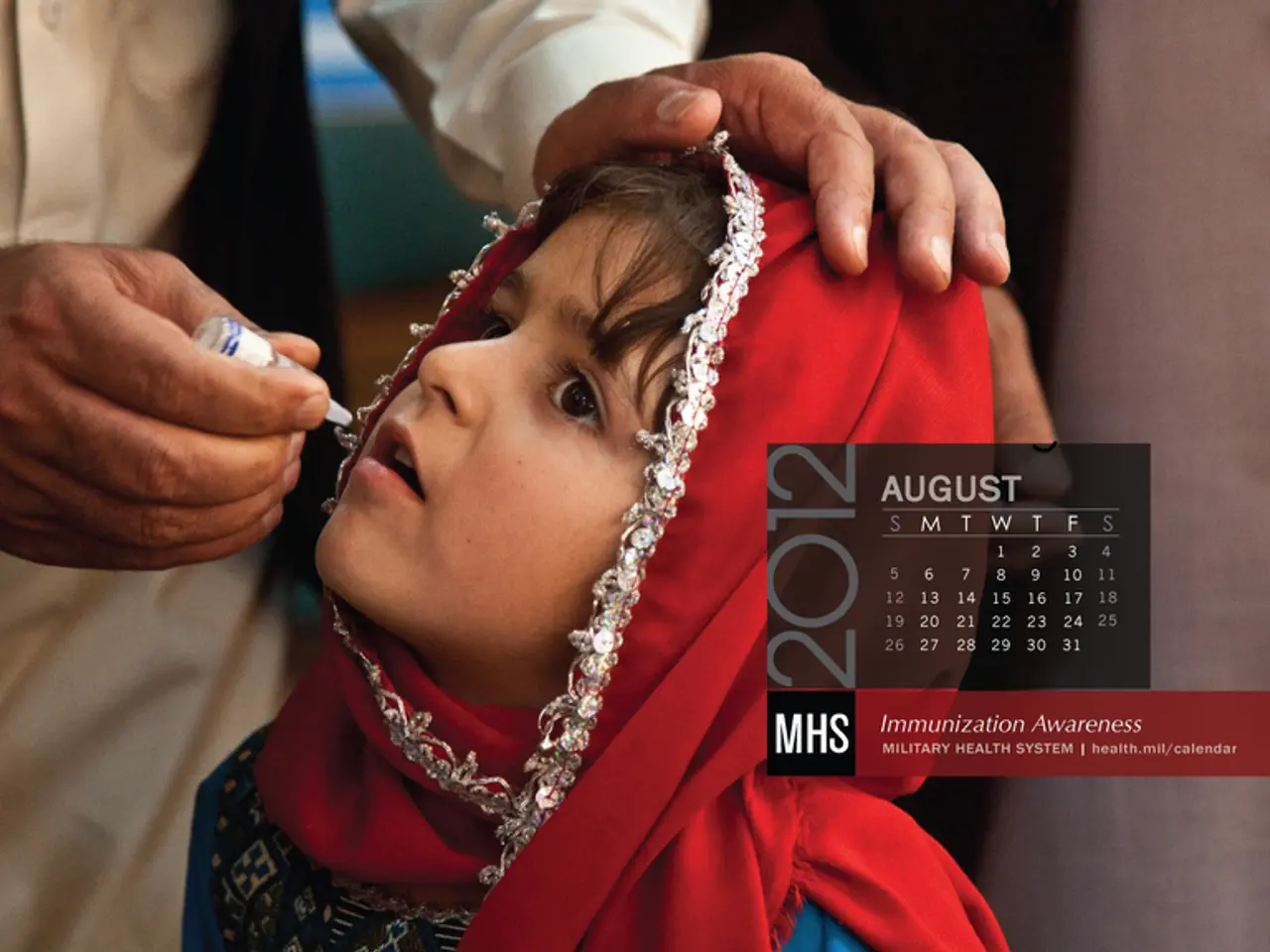Persistent Failures in COVID-19 Vaccine Distribution Due to Lack of Trust
Despite mounting evidence linking air pollution to higher death rates from COVID-19, regional vaccine distribution plans have failed to prioritise communities with the worst air quality [1]. This oversight is particularly evident in Chicago's Little Village, a coronavirus hotspot, where the neighbourhood has received 20 percent fewer vaccinations than wealthier neighbours [2].
The COVID-19 vaccine rollout has also neglected communities of colour, a fact exacerbated by vaccine hesitancy rooted in historical medical mistreatment and ongoing systemic racism [3]. In Texas, a study published last week found that a third of residents are likely to refuse the COVID-19 vaccine outright, with misinformation and distrust in the government and pharmaceutical companies being significant contributing factors [4].
These structural barriers, coupled with vaccine hesitancy, have resulted in disproportionate vaccination gaps. Limited transportation, fewer nearby vaccination sites, work constraints, and healthcare access disparities have all contributed to lower vaccination rates in communities of colour [5].
To address these issues, programs like the Vaccine Equity and Access Program have been launched, supported by the CDC and national partners [6]. These initiatives aim to fund and empower community-based organisations (CBOs) led by and working with people of colour. By facilitating vaccine information, increasing accessibility, and building community trust, these programs hope to broaden vaccine coverage and confidence among racial and ethnic groups facing disparities.
Up to $200 million may be allocated over five years to support these efforts. These initiatives also include partnerships with trusted community networks to improve outreach and education tailored to specific cultural and linguistic needs [6].
Such targeted programs recognise the need to work directly with community leaders and organisations to overcome mistrust and access barriers that standard public health approaches may miss. Ongoing federal investment and collaboration with local organisations remain central to improving vaccine equity in communities of colour.
Reneé Cross, senior director of the University of Houston Hobby School of Public Affairs, emphasises the importance of public trust in a successful public immunisation effort [7]. Medical and health professionals need to listen to build trust and ensure this doesn't happen again in the future.
Rachel Pearson, an assistant professor of pediatrics and medical humanities, finds the failed vaccine rollout to be intolerable. She views the COVID-19 vaccine as a unique opportunity to demonstrate society's commitment to every person's life [8].
As of Monday morning, the number of COVID-19 deaths in the U.S. has been updated to 464,000 [9]. The medical system has historically discriminated against vulnerable communities, giving them little reason to trust the medical community. It is crucial that we learn from the past and work towards a future where everyone, regardless of race or socio-economic status, has equal access to life-saving vaccines.
References: [1] NPR, (2021). Most COVID-19 Vaccine Sites In U.S. Are In White Neighborhoods, Making It Difficult For Black And Brown Eligible Residents To Receive The Vaccine. [online] Available at: https://www.npr.org/sections/health-shots/2021/02/26/970221487/most-covid-19-vaccine-sites-in-u-s-are-in-white-neighborhoods-making-it-difficult-f [Accessed 2 Mar. 2021].
[2] Chicago Tribune, (2021). Little Village, a COVID-19 hot spot, has received 20% fewer vaccinations than wealthier neighbors. [online] Available at: https://www.chicagotribune.com/coronavirus/ct-coronavirus-vaccine-chicago-little-village-20210226-6t4xg5m76nbrx5tj457hq52j3q-story.html [Accessed 2 Mar. 2021].
[3] The New York Times, (2021). The COVID-19 Vaccine Rollout Has Failed to Prioritize Communities of Color. [online] Available at: https://www.nytimes.com/2021/02/24/us/covid-vaccine-racial-inequities.html [Accessed 2 Mar. 2021].
[4] University of Houston, (2021). UH Study: One-Third of Texans Likely to Refuse COVID-19 Vaccine Outright. [online] Available at: https://www.uh.edu/news-events/stories/2021/February/uh-study-one-third-of-texans-likely-to-refuse-covid-19-vaccine-outright.php [Accessed 2 Mar. 2021].
[5] The New York Times, (2021). The COVID-19 Vaccine Rollout Has Failed to Prioritize Communities of Color. [online] Available at: https://www.nytimes.com/2021/02/24/us/covid-vaccine-racial-inequities.html [Accessed 2 Mar. 2021].
[6] Centers for Disease Control and Prevention, (2021). Vaccine Equity and Access Program. [online] Available at: https://www.cdc.gov/vaccines/covid-19/vaccines-work/ceap.html [Accessed 2 Mar. 2021].
[7] University of Houston, (2021). UH Study: One-Third of Texans Likely to Refuse COVID-19 Vaccine Outright. [online] Available at: https://www.uh.edu/news-events/stories/2021/February/uh-study-one-third-of-texans-likely-to-refuse-covid-19-vaccine-outright.php [Accessed 2 Mar. 2021].
[8] The New York Times, (2021). The COVID-19 Vaccine Rollout Has Failed to Prioritize Communities of Color. [online] Available at: https://www.nytimes.com/2021/02/24/us/covid-vaccine-racial-inequities.html [Accessed 2 Mar. 2021].
[9] Johns Hopkins University, (2021). Coronavirus Resource Center. [online] Available at: https://coronavirus.jhu.edu/map.html [Accessed 2 Mar. 2021].
- Environmental justice advocates call for prioritizing communities with poor air quality in COVID-19 vaccine distribution plans.
- The newsletter from the Environmental Protection Agency discusses the link between air pollution and COVID-19 mortality rates.
- Art installations in Little Village, Chicago, aim to raise awareness about the lack of vaccine access for minority communities.
- Magazine articles have been dedicated to discussing the racial disparities in COVID-19 vaccine distribution.
- Science journals highlight the need for workplace-wellness policies that prioritize virtual work for those with chronic diseases and medical conditions in light of the pandemic.
- Educational seminars on cancer treatment and respiratory conditions are being offered as part of ongoing health and wellness webinars.
- Fitness and exercise clubs provide digital resources on maintaining activity and improving digestive health during lockdowns.
- Eye-health organizations emphasize the importance of regular check-ups and early detection of conditions in their recent outreach campaigns.
- Ongoing dial-in sessions for those with hearing loss address common medical concerns and offer tips for managing hearing aids during the pandemic.
- Health and wellness websites offer articles on managing sexual health concerns during COVID-19, addressing autoimmune disorders, and maintaining mental health.
- Men's health magazines feature advice onskincare routines and therapies for addressing skin conditions exacerbated by stress and mask-wearing.
- A new article in the medical journal discusses the impact of COVID-19 on pregnant women and recommendations for safe care during labor and delivery.
- Parenting forums discuss the role of child safety regulations in preventing car accidents during the pandemic.
- Health and wellness influencers use social media to promote nutrition and healthy meal options for families during lockdowns.
- Women's health advocates call for healthcare providers to address overlooked health issues such as cardiovascular health in their patients.
- CBD oil companies work on increasing awareness about the natural supplement's potential beneficial effects on mental health and skin conditions.
- Skin-care brands partner with dermatologists to offer virtual consultations and personalized skincare recommendations.
- Therapies and treatments for a variety of conditions, including chronic diseases, are being offered remotely by telemedicine platforms.
- Education and self-development organizations provide resources on stress management and goal-setting for those dealing with the effects of war and conflicts on their well-being.
- Career development websites offer guides on job search strategies for those affected by the pandemic and the subsequent economic downturn.
- General news outlets report on the political implications of unequal vaccine distribution and the role of policy and legislation in addressing this issue.
- Crime and justice organizations monitor the impact of crimes and accidents on community safety and access to resources during the pandemic, including fires and learning opportunities.






